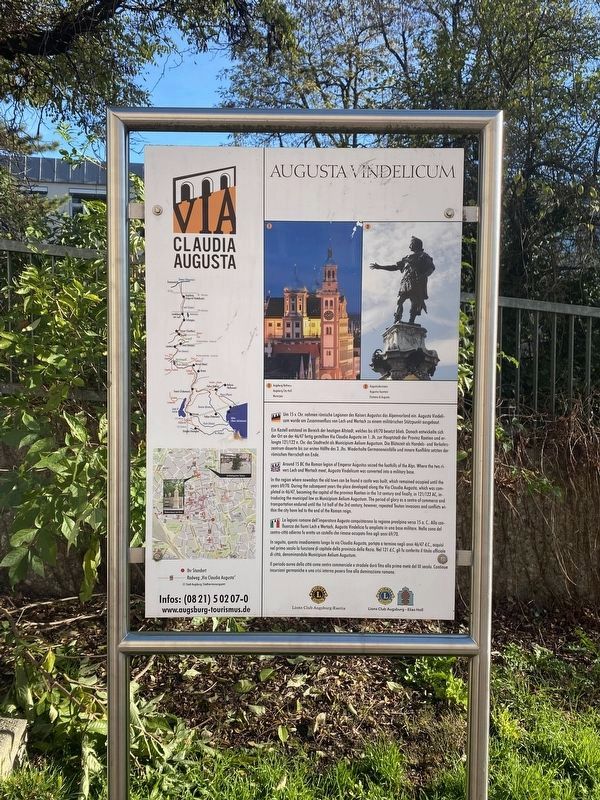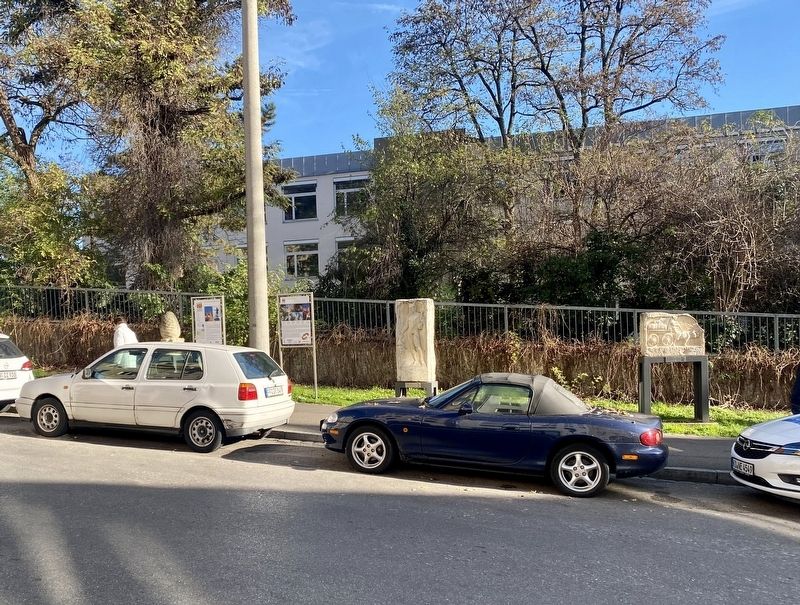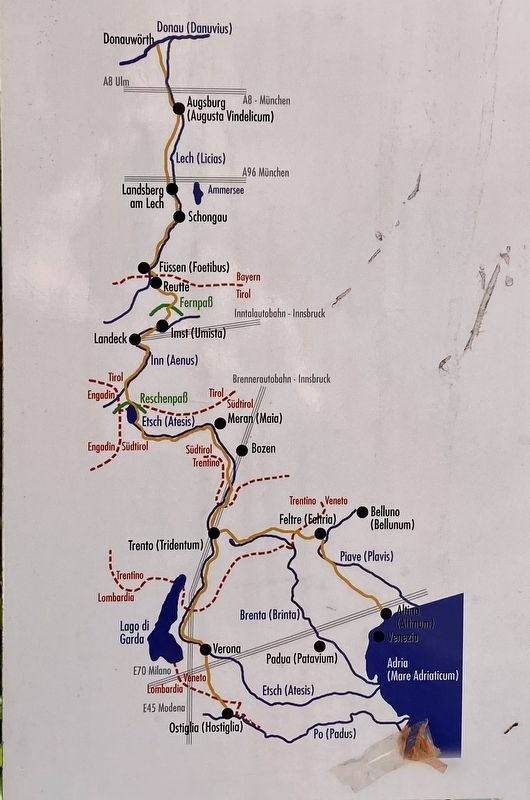Augsburg, Bavaria, Germany — Central Europe
Augusta Vindelicum
— Via Claudia Augusta —
German
Um 15 v. Chr. nahmen römische Legionen des Kaisers Augustus das Alpenvorland ein. Augusta Vindelicum wurde am Zusammenfluss von Lech und Wertach zu einem militärischen Stützpunkt ausgebaut.
Ein Kastell entstand im Bereich der heutigen Altstadt, welches bis 69/70 besetzt blieb. Danach entwickelte sich der Ort an der 46/47 fertig gestellten Via Claudia Augusta im 1. Jh. zur Hauptstadt der Provinz Roetien und erlangte 121/122 n. Chr. das Stadtrecht als Municipium Aelium Augustum. Die Blütezeit als Handels- und Verkehrszentrum dauerte bis zur ersten Hälfte des 3. Jhs. Wiederholte Germaneneinfälle und innere Konflikte setzten der römischen Herrschaft ein Ende.
Around 15 BC the Roman legion of Emperor Augustus seized the foothills of the Alps. Where the two rivers Lech and Wertach meet, Augusta Vindelicum was converted into a military base.
In the region where nowadays the old town can be found a castle was built, which remained occupied until the years 69/70. During the subsequent years the place developed along the Via Claudia Augusta, which was completed in 46/47, becoming the capital of the province Roetien in the 1st century and finally, in 121/122 AC, introducing the municipal law as Municipium Aelium Augustum. The period of glory as a centre of commerce and transportation endured until the 1st half of the 3rd century, however, repeated Teuton invasions and conflicts within the city have led to the end of the Roman reign.
Italian:
Le legioni romane dell'imperatore Augusto conquistarono la regione preolpina verso 15 a.C. Alla confluenza dei fiumi Lech e Wertach, Augusta Vindelicia fu ampliata in una base militare. Nella zona del centro-città odierno fu eretto un castello che rimase occupato fino agli anni 69/70.
In seguito, questo insediamento lungo la via Claudia Augusta, portata a termine negli anni 46/47 d.C., acquisi nel primo secolo la funzione di capitale della provincia della Rezia. Nel 121 d.C. gli fu conferito il titolo ufficiale di città, denominandola Municipium Aelium Augustum.
Il periodo aureo della città come centro commerciale e stradale durò fino alla prima metà del III secolo. Continue incursioni germaniche e una crisi interna posero fine alla dominazione romana.
Erected by Lions Club Augsburg-Raetia, Lions Club Augsburg Ellas-Holl.
Topics. This historical marker is listed in these topic lists: Roads & Vehicles
• Settlements & Settlers.
Location. 48° 21.88′ N, 10° 54.056′ E. Marker is in Augsburg, Bayern (Bavaria). Marker is on Predigerberg, on the right when traveling north. Touch for map. Marker is in this post office area: Augsburg BY 86150, Germany. Touch for directions.
Other nearby markers. At least 8 other markers are within walking distance of this marker. Das Römische Augsburg / The Roman Augsburg / Il Augsburg Romano (here, next to this marker); Via Claudia Augusta (a few steps from this marker); Bothmersches Palais (approx. 0.4 kilometers away); Philippine Welser (approx. 0.4 kilometers away); Johann Gottlieb Klaucke (approx. half a kilometer away); Die Stadtmetzg / The Municipal Butcher (approx. 0.6 kilometers away); Berthold Brecht House (approx. 0.6 kilometers away); Pemer-Haus am Kappeneck 17, Augsburg (approx. 0.6 kilometers away). Touch for a list and map of all markers in Augsburg.
Also see . . . Augsburg (Wikipedia).
Early history: The city of Augsburg was founded in 15 BC on the orders of Emperor Augustus. Emperor Augustus conducted extensive military campaigns and established administrative settlements. The settlement that became Augsburg was known as Augusta Vindelicorum, meaning "the Augustan city of the Vindelici". The settlement was established at the convergence of the Alpine rivers Lech and Wertach. In 120 AD Augsburg became the administrative capital of the Roman province Raetia. Augsburg was sacked by the Huns in the fifth century AD, by Charlemagne in the eighth century, and by Welf I, Duke of Bavaria in the 11th century.(Submitted on March 3, 2023.)
Credits. This page was last revised on March 3, 2023. It was originally submitted on March 3, 2023, by Andrew Ruppenstein of Lamorinda, California. This page has been viewed 37 times since then and 11 times this year. Photos: 1, 2, 3. submitted on March 3, 2023, by Andrew Ruppenstein of Lamorinda, California.


